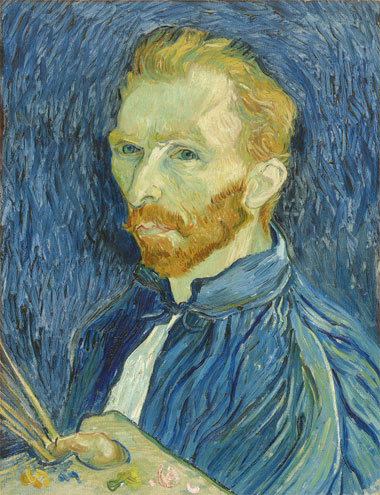1. Which assignment did you ENJOY working on the best? Why?
I enjoyed the curation project the best. Even though it took a bit of time (we had plenty of time to do it, though) it was really fun to think outside the box about what artists to choose and why. I love making presentations like that, and I just thought it was a great activity that helped me apply everything I've learned in the class so far, and apply it in a real life way. I also enjoyed the museum visits, I feel it's a much different experience to see art in real life as opposed to on a screen, and it was a great way to get us all out into a gallery.
2. Which assignment did you ENJOY working on the least? Why?
My least favorite was the blog peer responses to the museum visits/elements and principles peoject. While I think it's a great idea in theory, the one student I was assigned did not follow the directions (specifically on the elements and principles photo project) and it was hard for me to complete my end of the feedback and responses.
3. How did you like using BLACKBOARD?
It is honestly pretty confusing to start. Once I got the hang of it, it was fine, but my first week or so was tough to figure out where everything was, and I was nervous I'd miss something. It would be easier if discussions and content were all in the same place. There are just a lot of sections which makes it easy to miss something if you aren't paying close attention.
4. What is your opinion of the Discussion Groups in this course?
I liked the discussions, I wished we had more of it, honestly, or at least had more opportunities for feedback from our peers.
5. Did you participate in any of the extra credit projects in previous modules? If so, what was your opinion of them? (mandala, elgin marbles, culture, art critics)
I participated in the Mandala extra credit. I found that if I didn't check the module far enough ahead of time, I wouldn't have time to finish the extra credit (my fault!) but I think it's great you offer the opportunity.
6. If you had the opportunity to change this course:
What would you keep?
I would keep the museum visits, multi media projects, the elements and principles project, extra credit, and the curation project. I also liked the blog component, it was nice to document everything.
What would you remove?
I would remove the Photobucket element. It's an outdated website and was hard to use. I feel a powerpoint would work better, or even our blogs.
What would you add?
I would add more interactive elements with our peers. I thought the interactive projects where we provided feedback for each other was helpful, and I think the course would benefit more of that. I would also add some kind of interaction with the professor, or more feedback. I like feedback and find it helpful.
7. Would you recommend this course to your peers?
Yes, it's a great course and I feel I learned a lot.
8. Please list any other comments you would like to share
I think it would be helpful to have video instruction for each module. That probably sounds crazy, but when I had the opportunity to engage with my peers, I often found it harder on my end because they did not follow the directions. Maybe a more interactive element in that way would help.
The only other issue I had was with the quizzes. I had an issue on my last one where it was timing out on me and completing it for me before I was finished, which resulted in a lower grade than usual, and I did not see the message back that I had an additional opportunity until after the deadline had passed. Technology can be unpredictable, I understand that, it was just a frustrating situation.




